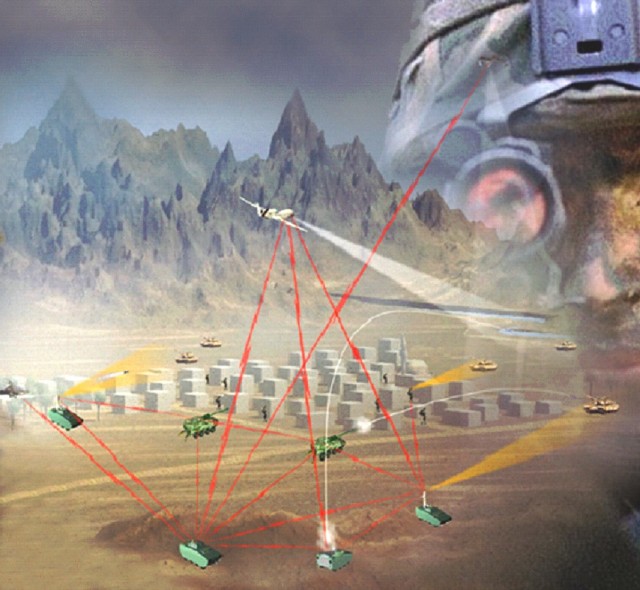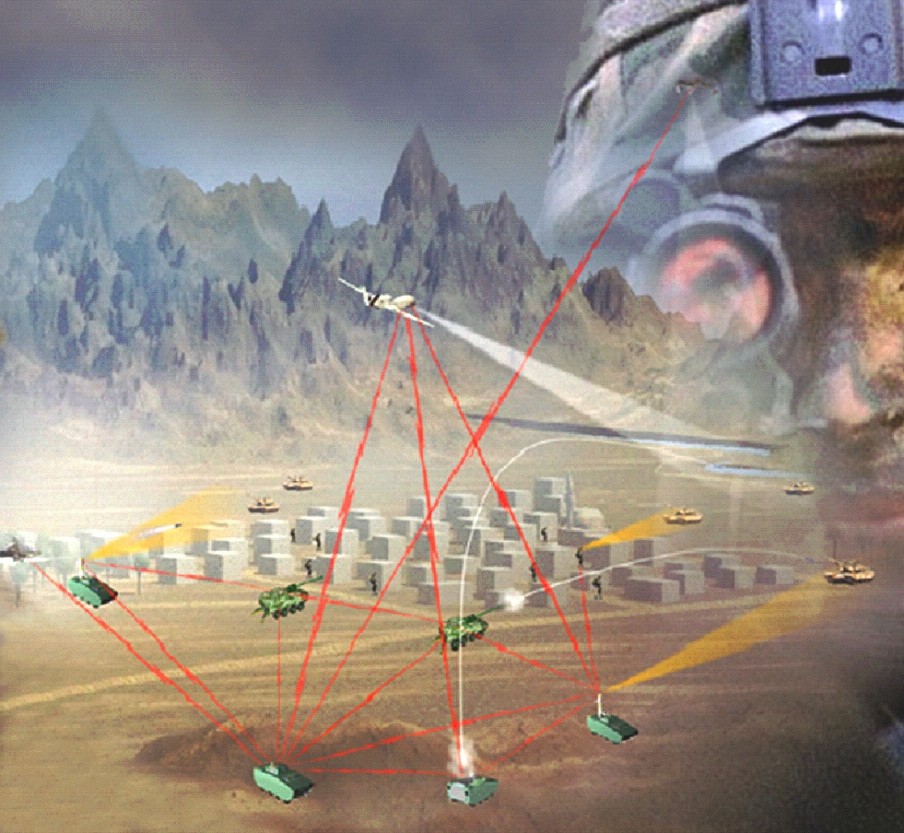WASHINGTON (Army News Service, May 14, 2008) -- If you owned a 1978 Chevy Impala, you'll remember that it was big, powered by a 12-mile-per-gallon V-8 engine. Its advanced safety features were lap seatbelts and drum brakes. It had a push-button radio and - if you were lucky - an 8-track player.
Three decades later, you may be driving a crossover sport utility vehicle powered by a 35-mile-per-gallon hybrid engine and rolling on 20-inch run-flat tires. Its advanced safety features include voice-activated controls, a crash avoidance system, side and rear video cameras, heads-up night vision display, a full suite of airbags and an onboard computer connected to a communications network with GPS technology, satellite radio and OnStar.
Basically, you have a world of information at your fingertips.
Just as the commercial market is transforming to meet personal market demands, the Army is transforming to meet Soldiers' needs in an era of persistent conflict.
These are complex activities and have not escaped skepticism. Recent articles by the press describe just how challenging a task it is to modernize an Army at war. These articles relied heavily on concerns stated in several recent Government Accountability Office reports that depict a fundamentally troubled Army modernization strategy. Some of GAO's concerns are legitimate, and we are learning from them. Many, however, are not.
For example, GAO asserts that our Future Combat Systems, or FCS, software code requirements have tripled since 2003. In reality, real growth in software code has been very modest, on the order of 5 percent. Additionally, much of the code counted by GAO as new is commercial code already in use in the private sector.
We have several differences with the methodology applied by GAO, which we have communicated to them. It should be noted that many of our most successful Army weapon systems and equipment initially were met with GAO skepticism. For example, in 1979, GAO reported that the M1 Abrams tank, then in development, "Falls short of meeting some of its critical design requirements. The principal problems are in the tank's reliability and durability."
Thirteen years later, after Operation Desert Storm, GAO acknowledged that "Abrams reliability throughout the ground campaign was very good, provided the necessary spare and repair parts were available. Some crews, [in fact], reported that the Abrams tanks were the 'best combat vehicles on the battlefield'."
The Army foresees similar success stories with the vehicles and communications networks being built today through its FCS, Warfighter Information Network-Tactical and Joint Tactical Radio System modernization programs.
To deal with the exponential pace of computer and software advances in recent years, the Army has adopted a phased approach to program development that is commonplace in the commercial world. We develop and deliver software in stages, or increments. In this manner, we identify and resolve problems, and integrate the latest technologies into the force without disrupting our entire modernization effort.
Many of the alleged problems cited by the commercial media are directly attributable to this approach. We do not adopt rigid, five- or 10-year plans to which we dogmatically adhere without regard to the lessons we are learning.
Instead, we continuously refine and adapt our efforts to address new requirements to keep ahead of the ruthless, thinking, adaptive enemies we face. Thus the Army has embarked upon the most ambitious and most comprehensive modernization effort since World War II.
Despite the skeptical views and the challenges we face, we are modernizing successfully. Today, we are providing new, robust communications capabilities - to connect our Soldiers, our leaders, and the systems which support and protect them in unprecedented ways.
Today's fielded capabilities offer a glimpse of what we will achieve in the future through the power of a modern, redundant network. Our need for comprehensive modernization became apparent at the outset of operations in Iraq. Addressing the Association of the U.S. Army Oct. 10, Secretary of Defense Robert Gates said, "By one count, investment in Army equipment and other essentials was underfunded by more than $50 billion before we invaded Iraq."
This condition created extraordinary challenges for communications. Gen. William "Scott" Wallace, now the commanding general of the Army's Training and Doctrine Command, who led the Fifth U.S. Corps into Baghdad in 2003, said, "When we attacked into Iraq in 2003, we were burdened with a legacy communications system designed for a fight in Central Europe. There was a digital divide that existed between operational and tactical headquarters."
Wallace's current assessment reflects the progress we are making: "Bandwidth and the resultant connectivity are [now] being pushed to the lowest tactical level - exactly where it needs to be in the decentralized operations taking place today."
Development risk exists in any venture that seeks to move beyond the status quo; it must be actively managed and mitigated to the maximum extent possible. The real risk lies not with a modernization effort that is both comprehensive and ambitious. Rather, the real risk lies with a failure to realize that the world has changed and that our Army must change accordingly.
(Lt. Gen. N. Ross Thompson is the military deputy to the acting assistant secretary of the Army for Acquisition, Logistics and Technology. He also serves as the director of acquisition career management for the U.S. Army.)


Social Sharing